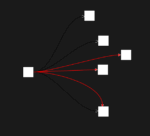In today’s data-driven world, businesses of all sizes are harnessing the power of data to gain insights and drive informed decision-making. When it comes to data, two terms frequently emerge in the realm of data engineering consulting: big data and small data. Understanding the differences between these two types of data is essential for organizations to effectively utilize and extract value from their data assets. In this article, we will explore the distinctions between big data and small data, highlighting their unique characteristics and applications.
Defining Big Data:
Big data refers to large volumes of structured, semi-structured, and unstructured data that exceeds the processing capabilities of traditional data management systems. Big data is typically characterized by the “Three V’s”: volume, velocity, and variety. It encompasses vast amounts of data generated from various sources such as social media, sensor networks, online transactions, and more. Big data requires specialized tools and technologies for storage, processing, and analysis, such as Hadoop and Apache Spark.
Applications of Big Data:
Big data finds application in numerous industries and use cases. For instance, in healthcare, big data analysis can facilitate disease prediction, personalized medicine, and population health management. In retail, it enables customer segmentation, demand forecasting, and real-time personalized marketing campaigns. Moreover, big data contributes to improving operational efficiency, optimizing supply chain management, and enhancing fraud detection in financial services.
Defining Small Data:
Small data, in contrast, refers to datasets that are more manageable in size and can be easily interpreted and analyzed using traditional data processing tools. Small data is often structured and resides within the realm of manageable Excel spreadsheets, databases, or CRM systems. It is typically derived from internal sources such as customer surveys, transaction records, or website analytics. Small data focuses on specific, targeted questions and aims to provide actionable insights efficiently.
Applications of Small Data:
Small data plays a significant role in various business scenarios. For instance, a small boutique retailer may analyze customer purchase patterns to identify trends and preferences, enabling them to personalize product offerings and improve customer satisfaction. In customer service, small data analysis can help identify recurring issues or bottlenecks, leading to process improvements and better service delivery. Small data is also commonly used in market research, sentiment analysis, and customer feedback analysis.
Key Differences between Big data and Small data:
- Volume: Big data is characterized by its massive volume, often measured in terabytes or petabytes, while small data refers to smaller datasets that can be easily managed and analyzed.
- Variety: Big data encompasses a wide variety of data types, including structured, semi-structured, and unstructured data from diverse sources. Small data, on the other hand, is usually structured and sourced from internal systems.
- Velocity: Big data is generated and processed in real-time or near-real-time, with a constant influx of data streaming in rapidly. Small data, being more manageable, does not require real-time processing and can be analyzed at a slower pace.
- Tools and Technologies: Big data necessitates specialized tools and technologies like Hadoop, Spark, and NoSQL databases, while small data can be processed using traditional data analysis tools such as Excel, SQL, or statistical software.
In summary, big data and small data differ significantly in terms of volume, variety, velocity, and the tools required for analysis. Big data encompasses large, diverse datasets requiring specialized tools and technologies for processing, while small data consists of more manageable datasets that can be analyzed using traditional methods. Both types of data have their unique applications and offer valuable insights for businesses. Understanding the distinctions between big data and small data enables organizations to leverage their data assets effectively, regardless of the scale, to drive data-informed decision-making and gain a competitive advantage in today’s data-centric landscape.

























